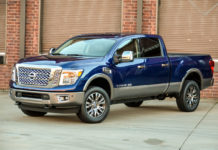Top Gear presenter Richard Hammond is stable but remains seriously ill in hospital after he crashed a jet-powered car during filming for the BBC show.
The 36-year-old was thought to be driving at about 300mph on an airfield near York when he crashed on Wednesday.
The BBC, which is likely to be closely scrutinised, and the Health and Safety Executive will investigate the crash.
Top Gear co-host Jeremy Clarkson, who was visiting the hospital, said many motorists were “rooting for” Hammond.
Clarkson was joined at the Leeds General Infirmary by the show's other presenter, James May.
He said in a statement that Hammond and his family were “the most important concerns we have”.
The audience and the TV producers want you as a presenter to be there, on the inside
Steve Berry
Former Top Gear presenter
Send us your comments
“I would just like to say how heartened Richard will be when I tell him just how many motorists and truck drivers on my way here wound down their windows to say they were rooting for him.”
Referring to Hammond by his nickname, Clarkson added: “Both James and I are looking forward to getting our 'hamster' back.”
He was initially reported to have suffered serious head injuries and was taken to the neurological unit of hospital by helicopter.
A spokesman said Hammond's condition, which was described as serious but stable, had showed some improvement overnight.
Doctors confirmed that his wife was at his bedside and his family had requested that no further information be released.
Hammond was driving a jet-powered dragster similar to the Vampire – used by Colin Fallows to set the British land speed record.
It is thought Hammond was attempting to break Fallows' record of 300.3mph.
Vampire
Estimated top speed: 370mph
Acceleration: 0 to 272mph in 6 seconds
Engine: Rolls Royce Orpheus
Fuel economy: 7-10 gallons per mile
Weight: 2,200 lbs (998kg)
Length: 30 feet (9.14m)
Enlarge Image
The BBC said in a statement that they had already begun to investigate the accident and promised full co-operation with the Health and Safety Executive.
“We continue to be concerned about his condition and we are keeping in touch with his family,” the statement said.
Top Gear has courted controversy in the past over its big-budget car stunts.
In 1999 a group of MPs criticised the series for being “obsessed with acceleration and speed”.
Last year, lobby group Transport 2000 called for the show to be taken off the air accusing it of “glamorising speed and failing to make the connection with danger on the roads”.
At the time, Hammond defended the programme, saying: “Top Gear is an entertaining show, for people that are interested in cars, that is driven by people who have been motoring journalists for many, many years.”
Parachutes deployed
Former firefighter Dave Ogden, who was working with Hammond at the Elvington airfield near York, said the car had done several runs when it “veered off to the right”.
“One of the parachutes had deployed but it went on to the grass and spun over and over before coming to a rest about 100 yards from us.”
His crew and an ambulance rushed over and had to cut Hammond free from the wreckage.
Steve Berry, one of Top Gear's former presenters, said the show had changed over the years.
In the past, he said audiences would have been happy to see the presenter interviewing the driver.
“That's not any good anymore… the audience and the TV producers want you as a presenter to be there, on the inside.”
Hammond grew up in Solihull, was educated in Yorkshire and lives near Cheltenham with his wife and children.
In addition to presenting Top Gear for the BBC, he also fronted Brainiac on Sky One and had his own show on ITV1.








